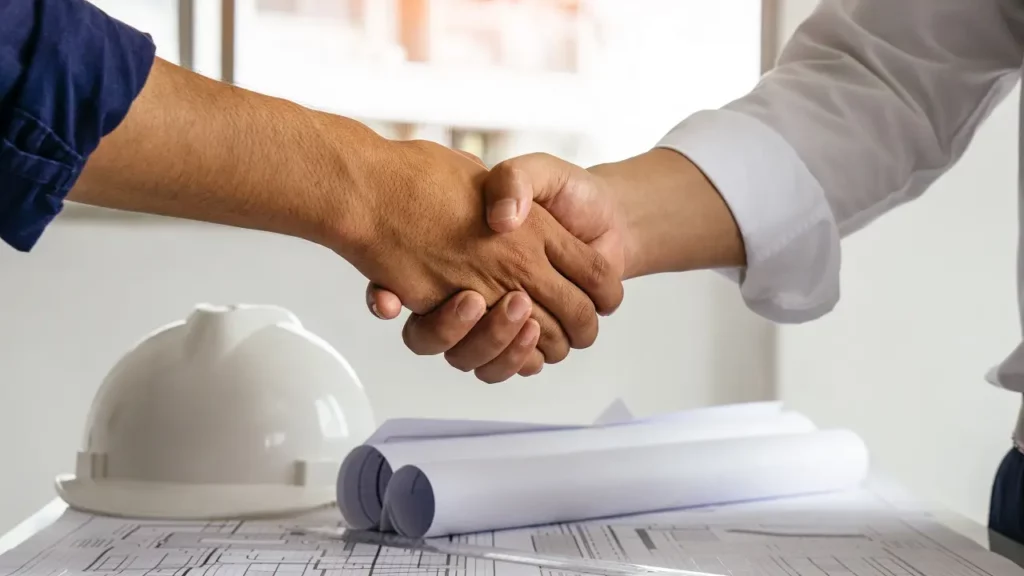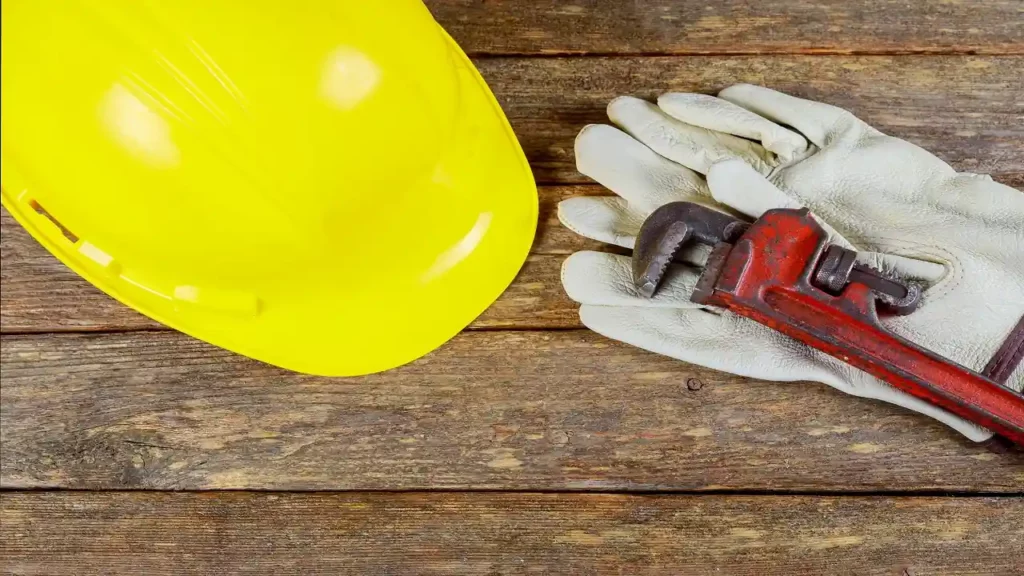Welcome to our comprehensive guide on planning and budgeting for a successful home addition project. Whether you’re expanding your living space, adding a new room, or creating a functional extension, careful planning and budgeting are essential for a smooth and successful construction process.
In this blog post, we will explore the key considerations, steps, and tips to help you plan and budget effectively for your home addition project.
Table of Contents
1. Assessing Your Needs and Goals

The first step in planning your home addition project is to assess your needs and goals. Determine the purpose of the addition and identify the specific features or functionalities you want to incorporate.
Consider factors such as additional living space, functionality, aesthetics, and long-term requirements. This will provide a clear direction for the project and help you make informed decisions throughout the planning process.
2. Setting a Realistic Budget

One of the most crucial aspects of planning a home addition is setting a realistic budget. Begin by determining how much you can afford to invest in the project. Consider your current financial situation, savings, and potential financing options.
It’s important to account for both the construction costs and any additional expenses such as permits, design fees, and furnishings. Research the average costs of similar projects in your area to get a rough estimate, and consult with professionals for more accurate cost assessments.
3. Obtaining Permits and Meeting Regulations

Before starting your home addition project, it’s essential to obtain the necessary permits and ensure compliance with local building regulations. Research the specific requirements in your area and consult with your local building department to understand the permit application process and any restrictions or guidelines that may apply. Failing to obtain the proper permits can lead to costly delays and potential legal issues down the line.
When planning a home addition, it’s crucial to understand the permits and legal requirements that apply to your project. Here’s a step-by-step guide to help you navigate this process:
Research Local Building Codes
Begin by researching the building codes and regulations specific to your location. Each area has its own set of requirements that dictate aspects such as structural design, electrical systems, plumbing, and zoning restrictions. Familiarize yourself with these codes to ensure compliance throughout your project.
Consult with Local Authorities
Contact your local building department or planning commission to discuss your home addition plans. They can provide you with detailed information on the permits required and any specific regulations you need to follow. It’s essential to engage with them early in the planning process to avoid potential delays or complications.
Prepare Documentation
Before applying for permits, you’ll likely need to prepare detailed documentation of your home addition plans. This may include architectural drawings, structural calculations, electrical and plumbing plans, and other relevant specifications. Working with a professional architect or designer can help ensure that your documentation meets the necessary standards.
Submit Permit Applications
Once you have your documentation ready, submit permit applications to the appropriate authorities. This typically involves filling out application forms, paying the required fees, and providing all requested documentation. Be prepared for a review process, which may include inspections and revisions before permits are issued.
Obtain Necessary Approvals
Depending on the complexity of your home addition project, you may need approvals from various departments or agencies. For example, if your project affects the exterior appearance of your home or the surrounding environment, you may need approval from architectural review boards or environmental agencies.
Construction and Inspections
After obtaining the necessary permits, you can begin the construction phase of your home addition. During this time, it’s essential to schedule and pass all required inspections to ensure compliance with building codes and regulations. Inspections may cover different aspects of the project, including foundation, framing, electrical, plumbing, and final inspections.
Non-Compliance Risks
It’s crucial to understand that proceeding without the required permits can have serious consequences. Building without permits may result in penalties, fines, forced removal of the addition, or legal complications when selling your property in the future. It’s always best to follow the proper permitting process to ensure your home addition meets all legal requirements.
Remember, the permitting process can vary depending on your location and the specifics of your home addition project. It’s important to consult with local authorities, engage professionals when needed, and adhere to all applicable building codes and regulations. By obtaining the necessary permits and complying with legal requirements, you can proceed with your home addition project confidently and avoid potential issues down the road.
4. Selecting The Right Contractor Ensuring Working with Professionals

Collaborating with experienced professionals is crucial for the success of your home addition project. Seek out reputable architects, designers, and contractors who specialize in home additions.
Their expertise will help you navigate the complexities of the project, ensure proper design and structural considerations, and provide valuable insights into cost-effective solutions. Request quotes from multiple professionals, review their portfolios and ask for references to make an informed decision.
Choosing the right contractor is crucial for the success of your home addition project. Here are some essential steps to help you select a reputable and reliable contractor:
Conduct Research
Start by conducting thorough research to identify potential contractors in your area. Seek recommendations from friends, family, or neighbors who have had successful home addition projects. Online directories and review websites can also provide valuable insights.
Check References
Once you have a list of potential contractors, ask for references. Contact previous clients and inquire about their experience working with the contractor. Ask about the quality of work, adherence to timelines, and overall professionalism.
Review Portfolios
Request to see portfolios or examples of past home addition projects completed by the contractors. This will give you an idea of their expertise, style, and attention to detail. Look for projects similar in scope and complexity to your own to assess their suitability.
Verify Licenses and Insurance
Ensure that the contractors you are considering have the necessary licenses and insurance coverage. This protects you from liability in case of accidents or damages during the construction process.
Evaluate Proposals
Obtain detailed proposals from the contractors you are interested in. Carefully review each proposal, considering factors such as project timeline, cost breakdown, materials to be used, and any specific terms or conditions.
Compare Bids
It’s essential to compare bids from different contractors to understand the pricing structure and ensure you’re receiving a fair and competitive offer. However, be cautious of extremely low bids, as they may indicate subpar workmanship or the use of inferior materials.
Communication and Compatibility
Communication is key to a successful home addition project. Choose a contractor who is responsive, listens to your ideas, and communicates effectively. Additionally, consider their compatibility with your working style and their ability to understand and execute your vision.
Contracts and Agreements
Once you have selected a contractor, make sure to sign a written contract that outlines all the project details, including the scope of work, timeline, payment schedule, and warranties. Review the contract carefully and seek legal advice if needed.
Remember, selecting the right contractor is not just about finding the lowest price. It’s about finding a contractor with a solid reputation, experience in home additions, and a track record of delivering quality results. Taking the time to research, check references, and evaluate proposals will help you make an informed decision and ensure a smooth and successful home addition project.
5. Establishing a Construction Timeline

Creating a realistic construction timeline is essential for effective project management. Work with your contractor to develop a detailed schedule that outlines the different phases of the project, including demolition (if necessary), construction, and finishing touches.
Consider factors such as weather conditions and potential unforeseen delays. A well-planned timeline will help you stay organized, manage expectations, and ensure that the project stays on track.
Understanding the timeline and project duration is crucial when planning your home addition. While every project is unique, here is a general overview of the typical phases and durations involved:
Design Phase
The design phase is where you work closely with an architect or designer to create the plans for your home addition. This phase typically takes a few weeks to a couple of months, depending on the complexity of the project and the level of customization required.
Permits and Approvals
Before construction can begin, you’ll need to obtain the necessary permits and approvals from your local building department. The timeframe for this process can vary significantly depending on your location and the specific requirements. It’s essential to factor in potential delays during this phase, which can range from a few weeks to a couple of months.
Construction Phase
The construction phase is where your home addition takes shape. The duration of this phase depends on the size and complexity of the project. Smaller additions may take a few weeks to a couple of months, while larger and more intricate additions can take several months to complete. Factors that can affect the construction timeline include weather conditions, unforeseen issues, and the availability of labor and materials.
Finishing Touches
Once the construction is complete, the finishing touches phase begins. This includes interior finishes, such as painting, flooring, electrical and plumbing installations, and any additional customization or detailing. The duration of this phase can vary depending on the scope of work involved but typically ranges from a few weeks to a couple of months.
Note: It’s important to note that the timeline provided is a general guideline and can vary based on various factors, including the size and complexity of your project, local regulations, contractor availability, and unforeseen circumstances. It’s always recommended to consult with your contractor or project manager to get a more accurate timeline specific to your home addition.
Proper planning and open communication with your contractor are key to staying on track and ensuring a smooth progression throughout each phase of the project. By understanding the timeline and factors that can influence project duration, you can set realistic expectations and make informed decisions as you embark on your home addition journey.
6. Contingency Planning

Home addition projects often come with unexpected surprises or unforeseen challenges. It’s important to include a contingency budget and plan for unexpected costs or delays. Generally, it’s recommended to set aside an additional 10-20% of your total budget as a contingency fund. This will provide financial flexibility and peace of mind if any unexpected issues arise during construction.
7. Design Considerations

When embarking on a home addition project, it’s crucial to give careful thought to the design elements that will shape the look and feel of your new space. Considerations such as architectural style, aesthetics, and seamless integration with the existing structure can have a significant impact on the success and overall satisfaction of your project.
Here are some key design considerations to keep in mind:
Architectural Style
Assess the architectural style of your current home and determine how the addition can complement or enhance it. Whether your home boasts a traditional, contemporary, or eclectic design, strive for a cohesive and harmonious integration that maintains the overall aesthetic appeal.
Proportions and Scale
Ensure that the proportions and scale of the addition align with the existing structure. An addition that is too large or too small in comparison can disrupt the visual balance of your home. Consider how the new space will relate to the surrounding areas and strive for a harmonious transition.
Natural Light and Views
Capitalize on natural light and views by incorporating large windows, skylights, or strategically placed openings. Utilize design elements that maximize the amount of sunlight entering the space while also providing opportunities to enjoy scenic views and the beauty of the outdoors.
Functionality and Flow
Prioritize functionality and flow within the design of your home addition. Consider how the new space will be used and ensure that it seamlessly integrates with your daily activities and routines. Create a layout that optimizes functionality and allows for smooth movement between different areas.
Materials and Finishes
Select materials and finishes that not only complement the existing structure but also align with your personal style and preferences. Whether you prefer a modern, rustic, or minimalist aesthetic, choose materials that enhance the desired look and feel of your home addition.
Interior Design and Decor
Consider the interior design and décor of the new space to create a cohesive and inviting atmosphere. Select furniture, colors, and accessories that harmonize with the overall design scheme and reflect your personal taste.
Remember, the design of your home addition should not only meet your functional needs but also enhance the overall visual appeal of your home. Consulting with an experienced architect or designer can provide valuable insights and help you bring your vision to life.
By carefully considering design elements, you can create a home addition that seamlessly integrates with your existing structure and adds both practicality and beauty to your living space.
8. Energy Efficiency and Sustainability

In today’s world, the importance of energy efficiency and sustainability cannot be overlooked when planning a home addition. By incorporating eco-friendly practices and energy-saving technologies into your project, you not only contribute to a healthier environment but also enjoy long-term benefits.
Here are some key points to consider regarding energy efficiency and sustainability in your home addition:
Energy-Efficient Materials
Choose building materials that have high energy efficiency ratings. This includes insulation, windows, and doors that help regulate indoor temperatures and reduce energy consumption. Opting for materials with good thermal properties can significantly contribute to energy savings and lower utility bills.
Appliances and Fixtures
When selecting appliances and fixtures for your home addition, prioritize energy-efficient options. Look for ENERGY STAR-certified appliances that consume less energy without compromising performance. Consider installing low-flow plumbing fixtures, LED lighting, and programmable thermostats to further enhance energy efficiency.
Renewable Energy Solutions
Explore the possibility of integrating renewable energy systems into your home addition. Solar panels, for example, can harness the power of the sun to generate electricity and reduce dependence on traditional energy sources. Incorporating renewable energy solutions not only decreases your carbon footprint but can also lead to long-term cost savings on energy bills.
Green Building Practices
Embrace green building practices during the construction process. This includes using sustainable construction materials, such as recycled or locally sourced products, and employing construction techniques that minimize waste and maximize efficiency. Consider utilizing materials with low volatile organic compounds (VOCs) to enhance indoor air quality.
Water Efficiency
In addition to energy efficiency, consider water efficiency in your home addition. Install water-saving fixtures, such as low-flow toilets and showerheads, and consider implementing rainwater harvesting systems for irrigation purposes. Conserving water not only helps the environment but also reduces your water bills.
Long-Term Benefits
Incorporating energy-efficient and sustainable features into your home addition offers several long-term benefits. Lower energy consumption means reduced utility bills and long-term savings. Additionally, green building practices and sustainable design can enhance the value of your home and attract environmentally conscious buyers should you decide to sell in the future.
By prioritizing energy efficiency and sustainability in your home addition, you contribute to a greener and more sustainable future while enjoying the immediate benefits of reduced energy costs and increased comfort. Consult with professionals who specialize in green building practices and sustainable design to explore the best options for your specific project.
9. Financing Options For Your Home Remodel Addition

Embarking on a home addition project requires careful financial planning. While it’s essential to set a realistic budget, you may need to explore financing options to bring your vision to life. Here are some financing options to consider when planning your home addition:
Home Equity Loans
A home equity loan allows you to borrow against the equity you have built in your home. This type of loan provides a lump sum of money with a fixed interest rate and a repayment term. Home equity loans are a popular choice for financing home additions as they offer competitive interest rates and may provide potential tax advantages. However, keep in mind that you’re using your home as collateral, so it’s important to ensure you can meet the loan obligations.
Home Equity Line of Credit (HELOC)
Similar to a home equity loan, a HELOC allows you to borrow against the equity in your home. However, instead of receiving a lump sum, you have access to a line of credit that you can draw from as needed. HELOCs offer flexibility and often have lower initial costs compared to home equity loans. You only pay interest on the amount you borrow, but keep in mind that interest rates may fluctuate over time.
Personal Loans
If you prefer an unsecured loan without using your home as collateral, a personal loan can be an option. Personal loans have fixed interest rates and repayment terms, and the funds can be used for various purposes, including home additions. It’s important to note that personal loans typically have higher interest rates compared to home equity loans or HELOCs, and eligibility may depend on your credit history and income.
Refinancing Existing Mortgage
Refinancing your existing mortgage can be an option if you have sufficient equity in your home. By refinancing, you can access additional funds to finance your home addition while also potentially securing a lower interest rate and adjusting your repayment terms. However, it’s important to carefully evaluate the costs associated with refinancing, including closing costs and potential changes to your monthly mortgage payments.
Consult with Financial Advisors or Lenders
It’s always wise to consult with financial advisors or lenders who specialize in home financing. They can provide personalized advice based on your financial situation, credit history, and the specific details of your home addition project. They can help you assess the best financing options available to you and guide you through the application and approval process.
Remember, each financing option has its own advantages and considerations, so it’s crucial to thoroughly evaluate the terms, interest rates, repayment terms, and any associated fees. Carefully consider your financial goals, monthly budget, and ability to repay the loan when selecting a financing option for your home addition project.
10. Managing Disruptions

Embarking on a home addition project is an exciting endeavor, but it’s important to acknowledge that construction work can bring disruptions to your daily routine. Here are some practical tips to help you minimize disruptions and navigate the construction process smoothly:
Create Temporary Living Spaces
Depending on the scope of your home addition, certain areas of your home may be inaccessible or under construction. Consider creating temporary living spaces within your home to maintain functionality and comfort during the project. For example, you can set up a temporary kitchenette or designate a specific area for relaxation and downtime.
Establish Clear Communication Channels
Effective communication is key to managing disruptions. Maintain open lines of communication with your contractor and construction team to stay informed about the project’s progress and any potential changes or challenges. Regularly discuss the construction schedule, milestones, and any expected disruptions, allowing you to plan ahead and adjust your routine accordingly.
Set Realistic Expectations
Understand that construction work can cause temporary inconveniences such as noise, dust, and limited access to certain areas of your home. Set realistic expectations with your family members and communicate the potential disruptions they may experience during the project. By preparing them in advance, everyone can better cope with the temporary changes to their living environment.
Maintain a Positive Mindset
Remind yourself of the end result and the positive transformation your home addition will bring. While the construction phase may be challenging at times, keeping a positive mindset can help you stay focused on the ultimate goal. Remember that temporary disruptions are part of the process and will lead to a more functional and beautiful home.
Plan for Alternative Accommodations, if Necessary
In some cases, the extent of the home addition project may make it impractical to continue living in your home during construction. If this is the case, consider making arrangements for alternative accommodations, such as staying with family or renting a temporary residence. This can help you avoid major disruptions and ensure a smoother construction process.
Communicate with Neighbors
If your home addition project may impact your neighbors, it’s essential to maintain open lines of communication. Inform them about the project, its timeline, and any potential disruptions they may experience, such as noise or increased construction traffic. By proactively addressing their concerns and keeping them informed, you can maintain positive relationships within the community.
Remember, while disruptions during a home addition project are temporary, the benefits and long-term enjoyment of your expanded living space will be lasting. By taking proactive steps to manage disruptions, maintaining effective communication, and keeping a positive mindset, you can navigate the construction process with greater ease and look forward to the transformation of your home.
11. Quality Assurance and Warranty for Your Home Addition

When embarking on a home addition project, ensuring quality assurance and obtaining warranties is of utmost importance. Here’s why it matters and how you can safeguard your investment:
Working with Reputable Contractors
Choosing a reputable contractor for your home addition project is crucial. A reputable contractor will prioritize quality workmanship, use high-quality materials, and adhere to industry standards. By selecting a trusted professional, you can have confidence in the quality of their work and minimize the risk of potential issues down the line.
Quality Materials and Workmanship
Insist on using quality materials for your home addition. Quality materials not only contribute to the durability and longevity of your project but also enhance its overall appearance. Additionally, skilled workmanship ensures that the construction is done with precision and attention to detail, resulting in a finished product that meets or exceeds your expectations.
Contractor Warranties
When hiring a contractor, inquire about the warranties they offer for their services. A reputable contractor will stand behind their work and provide warranties that cover both materials and workmanship. These warranties typically ensure that any defects or issues arising from the construction process will be addressed and remedied promptly, giving you peace of mind and protecting your investment.
Manufacturer Warranties
In addition to contractor warranties, it’s essential to consider the warranties provided by manufacturers for the materials used in your home addition. Many manufacturers offer warranties on their products, such as roofing materials, windows, or appliances. Be sure to understand the terms and conditions of these warranties and keep the necessary documentation for future reference.
Regular Inspections and Maintenance
Even with quality workmanship and materials, it’s crucial to perform regular inspections and maintenance to keep your home addition in optimal condition. Schedule periodic inspections to identify any potential issues early on and address them promptly. Additionally, follow any maintenance guidelines provided by your contractor or manufacturers to extend the lifespan of your home addition.
Communication and Issue Resolution
Maintain open lines of communication with your contractor throughout the construction process and beyond. If you encounter any issues or concerns with your home addition, promptly communicate them to your contractor so they can be resolved in a timely manner. Effective communication is key to ensuring that any warranty claims or necessary repairs are addressed satisfactorily.
By prioritizing quality assurance and obtaining warranties for your home addition project, you can have confidence in the materials used, the workmanship delivered, and the longevity of your investment. Working with reputable contractors, understanding warranty coverage, and conducting regular inspections and maintenance will help you protect your home addition and enjoy it for years to come.
12. Safety Considerations for Your Home Addition

When planning and executing a home addition project, prioritizing safety is paramount. Here are key safety considerations to keep in mind:
Construction Site Management
Ensure that your construction site is properly managed to minimize potential hazards. This includes maintaining a clean and organized site, securing materials and equipment, and implementing safety protocols for workers. Clear pathways and designated work areas help prevent accidents and ensure smooth operations.
Adherence to Building Codes and Regulations
It is essential to comply with local building codes and regulations throughout the construction process. Building codes exist to ensure the structural integrity and safety of your home addition. Working with experienced professionals who are knowledgeable about these codes helps ensure that your project meets all necessary requirements.
Safety Equipment and Protective Measures
Emphasize the use of safety equipment and protective measures on the construction site. This includes personal protective equipment (PPE) such as hard hats, safety glasses, gloves, and proper footwear. Additionally, safety barriers, signage, and temporary fencing can help prevent unauthorized access and protect both workers and residents.
Licensed and Insured Professionals
When hiring contractors and subcontractors for your home addition, always choose licensed and insured professionals. Licensed contractors have met certain qualifications and adhere to industry standards, while insurance coverage provides protection against any potential accidents or damages that may occur during construction.
Hazard Identification and Mitigation
Conduct a thorough hazard assessment of the construction site and take appropriate measures to mitigate any identified risks. This may include addressing potential electrical hazards, ensuring proper scaffolding and ladder safety, and implementing fall protection measures. Regular inspections and ongoing monitoring help maintain a safe working environment.
Communication and Safety Training
Effective communication is key to maintaining a safe construction site. Encourage open dialogue between the construction team, homeowners, and any other stakeholders involved. Additionally, ensure that all workers receive proper safety training and are aware of emergency procedures and protocols.
Remember, safety should never be compromised during the construction of your home addition. By prioritizing construction site management, adhering to building codes, using safety equipment, working with licensed professionals, identifying and mitigating hazards, and fostering effective communication, you can create a safe environment for everyone involved in the project.
13. Post-Construction Considerations for Your Home Addition

Congratulations on completing your home addition project! As you enter the post-construction phase, there are a few important considerations to keep in mind. Here’s a guide to help you navigate this stage and ensure a smooth transition into your newly added space:
Site Cleanup
Once the construction is complete, it’s essential to clean up the construction site. Remove any debris, tools, or materials that may still be present. Thoroughly clean the area to make it safe and ready for use.
Final Inspections
Schedule and pass all required final inspections. These inspections ensure that your home addition meets all building codes and regulations. Inspectors will check various aspects, including electrical, plumbing, structural integrity, and safety features. It’s important to address any issues identified during the inspection promptly.
Follow-Up and Maintenance
After the final inspections, there may be certain follow-up tasks or maintenance requirements to address. This could include minor touch-ups, adjustments, or the installation of finishing touches. Work closely with your contractor to ensure any remaining tasks are completed satisfactorily.
Transition and Organization
Take the time to organize and arrange the newly added space according to your needs and preferences. This may involve furnishing the area, installing storage solutions, and setting up utilities. Consider hiring professional organizers or interior designers to help you optimize the functionality and aesthetics of the space.
Enjoying Your New Space
Once everything is in place, it’s time to enjoy your new home addition! Whether it’s a spacious living area, a cozy home office, or an expanded kitchen, make the most of the added space. Personalize it with your preferred decor, furniture, and personal touches to create a comfortable and welcoming environment.
Regular Maintenance and Upkeep
As with any part of your home, regular maintenance and upkeep are essential to preserve the quality and longevity of your home addition. Follow the manufacturer’s guidelines for any appliances, fixtures, or systems installed during the project. Regularly inspect the space for any signs of wear or damage and address them promptly.
Warranty and Guarantees
If your home addition comes with warranties or guarantees from the contractor or manufacturer, be sure to keep those documents in a safe place. Familiarize yourself with the terms and conditions of the warranties and understand the process for making any claims if necessary.
By addressing these post-construction considerations, you can ensure a seamless transition into your newly added space and enjoy the benefits of your home addition for years to come. Remember to stay proactive in maintaining and caring for your investment, and don’t hesitate to reach out to professionals for any additional guidance or assistance you may need.
Conclusion of Plan and Budget for Your Home Addition Project
Planning and budgeting for a home addition project is an exciting and rewarding journey. By following the steps and considerations outlined in this guide, you can set yourself up for success and ensure a smooth and fulfilling experience.
Now, armed with this comprehensive guide, you are ready to embark on your home addition journey with confidence and clarity. Whether you’re adding a new room, expanding your living space, or creating a functional workspace, may your home addition project be a resounding success, bringing you joy, comfort, and an enhanced living experience for years to come?
Frequently Asked Questions
How Do I Determine if a Home Addition Is the Right Choice for Me?
Assess your needs and priorities by considering factors such as space requirements, functionality, and long-term goals. Consult with professionals to evaluate the feasibility of your project.
How Long Does a Home Addition Project Typically Take?
The timeline can vary depending on the size, complexity, and various other factors. On average, a home addition project can take several months to complete, including the design phase, obtaining permits, and the actual construction.
How Much Does a Home Addition Project Cost?
The cost of a home addition project varies based on factors such as the size, materials, design complexity, location, and local labor costs. It is recommended to consult with contractors or professionals to obtain accurate cost estimates specific to your project.
Do I Need to Obtain Permits for My Home Addition Project?
Yes, in most cases, obtaining permits is necessary for home addition projects. Building permits ensure that the construction meets local building codes and regulations. It’s essential to check with your local building department to understand the specific permit requirements for your area.
How Can I Finance My Home Addition Project
There are several financing options available, including home equity loans, personal loans, and refinancing existing mortgages. Consulting with financial advisors or lenders can help you explore the best financing solution based on your circumstances.
Should I Hire a Professional Contractor for My Home Addition Project?
Hiring a professional contractor is highly recommended for home addition projects. They bring expertise, experience, and knowledge of building codes. They also have access to resources and can ensure the project is completed safely and to a high standard.
How can I ensure the quality of workmanship in my home addition project?
Selecting a reputable and experienced contractor is crucial. Check references, review past projects, and verify licenses and insurance coverage. Additionally, discussing quality assurance measures and warranties with the contractor will help ensure the quality of workmanship.
What Are Some Common Challenges During a Home Addition Project?
Challenges can include unexpected construction issues, weather delays, or managing disruptions to your daily routine. Working closely with your contractor, maintaining open communication, and having a contingency plan can help address these challenges effectively.
Can I Make Changes to the Design During the Construction Process?
It’s possible to make changes to the design during the construction process, but it may impact the timeline and budget. Discuss any desired changes with your contractor and consider the implications before proceeding.
How Can I Ensure Energy Efficiency in My Home Addition Project?
Incorporating energy-efficient materials, appliances, and systems can enhance the energy efficiency of your home addition. Discuss energy-efficient options with your contractor and explore sustainable design practices.



